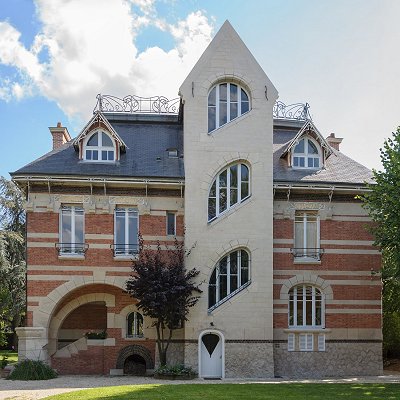
Like us on Facebook
PLACE NAMES


 
|
|
Le Vésinet
|

|
|
Le Vésinet is located in a bend of the Seine, but has no access to the river. It is 19 km west of Paris and 4 km east of Saint-Germain-en-Laye. The surrounding communes are Chatou on the east, Croissy-sur-Seine on the south, Le Pecq on the west, and Montesson on the north.
The terrain is an alluvial plain ranging from 28 meters near Le Pecq to 45 meters in altitude at the end of the Route de Montesson, with a gentle slope from northeast to southwest.
The commune is entirely urbanized, principally with single-family dwellings. Green space comprises 20 percent of the territory. There are a number of lakes: the lac Supérieur, the lac Inférieur, the lac de la Station, the lac de Croissy, and the Grand lac (with a large central island, l'Île des Ibis) also called Lac des Ibis.. These lakes are linked by nearly 4 km of artificial streams called les Petites Rivières.
Sights
Le Vésinet was the first "ville-parc" to be built in France. It has many green spaces, lakes, and lavish mansions.
The following are notable buildings:
- L'hôpital du Vésinet (72 avenue de la Princesse), built by Eugène Laval in 1859
- Sainte-Marguerite (place de l'Eglise), built by Louis-Auguste Boileau from 1862 to 1865, the first non-industrial building in France built of concrete
- Villa Berthe ou La Hublotière (72 route de Montesson), built by Hector Guimard in 1896.
- Rose Palace (12 rue Diderot), built on the model of the Grand Trianon in Versailles by Arthur Schweitzer about 1900
- Wood Cottage (122 boulevard des Etats-Unis), classified as a historic monument in 2000. Built in 1864 by Tricotel, a landscaping firm.
- Villa Olivia (12 avenue Rembrandt) built by Pierre-Joseph Olive
- Sainte-Pauline, built in 1905
 Feel free to Email me any additions or corrections Feel free to Email me any additions or corrections
LINKS AVAILABLE TO YOUR SITE
| | |





